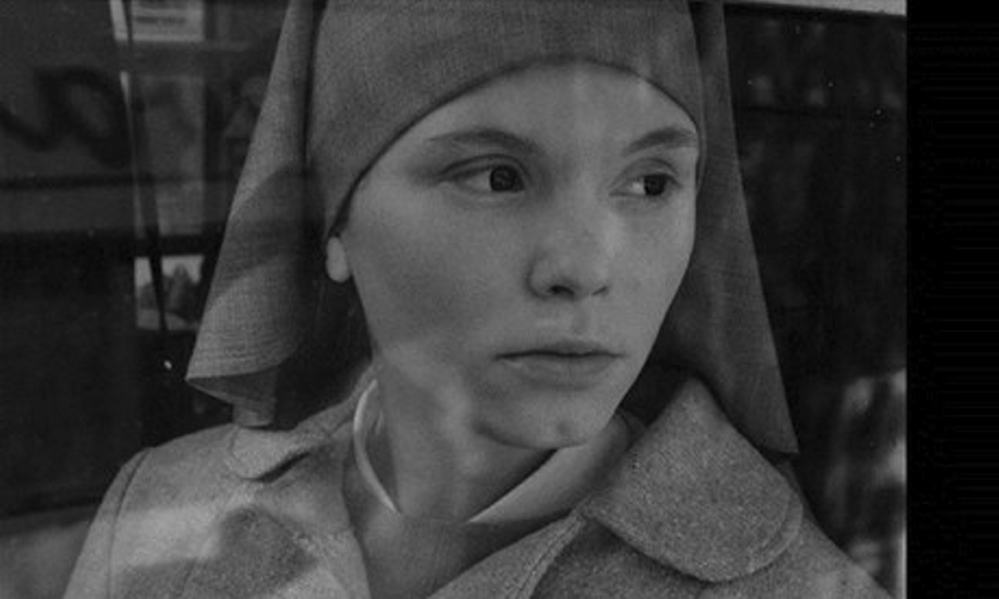“The past is never where you think you left it”
— Katherine Anne Porter.”
Agata Trzebuchowska is Anna, a quiet, naive and sensitive young woman, a novice in a Polish convent sometime after the war, in an emotionally and politically shattered Poland, where it seems the summers are indistinguishable from the winters, where the ferocity of war, antisemitism and crushing heel of communism have even erased the seasons.
In this film, if hope is indeed a bird, there are no songs in the trees.
Anna was orphaned almost as an infant after the war in a small Polish village, and if there was anything for her to remember, it had been washed away by the cold winds of war.
Someone brought her to this Orwellian convent where she grew up one of God’s stick figures in solemn gray, overseen by humorless nuns. Gray is the dominant color in Polish writer director Pawel Pawlikowski’s “My Summer of Love” haunting film.
As we walk into Anna’s cold world, she is a week or two away from taking her final vows, when she will change her gray for a full sister’s black. On this day she is called into the Mother Superior’s rooms and told that she is to return to her village to meet an aunt, so that she will learn about her childhood and at least, have one of her family to witness her vows.
Anna would rather not take the trip, but her life, one of obedience, has no menu of choices.
Riding a bus and train with her tiny suitcase, Anna moves through a Polish landscape to her home village, where she meets Aunt Wanda (Agata Kulesza) who called for this reunion. Wanda, we learn, was a fierce communist partisan fighter against the Germans, and was rewarded with a judgeship, a post she used like a sword to wreak vengeance and death on collaborators. Now Wanda, weary from war and vengeance, lives alone with her vodka, cigarettes and occasional men.
Their meeting is as chilly as a wind taking a piece of newspaper down the street. It is here, almost at once, that she opens the past and gives us Ida Liebenstein, Anna’s real name, and reveals that this frail Catholic novice nun is in reality, a Jew. Anna learns that her mother and father were swept up in the Nazi storm, and were murdered and buried in the woods.
Aunt Wanda seems to want to scour and purge the past more for herself than Ida. She takes the girl along in her ancient car to the village, confronts the Catholics who stole the family house, shabby as it is, and discovers who actually murdered the inhabitants. Together, with the penitent and confessed murderer, they dig in the forest and discover more than they had wanted to know.
A handsome jazz saxophonist (Dawid Ogrodnik) plays a brief part in the long delayed awakening of Anna/Ida, and slowly, painfully, another tragedy occurs that gives the new born Ida a choice. Near the end, Anna plays out a scene in her aunt’s vacant apartment where she explores that choice.
Were it not for the talents of the film makers, we might be faced with yet another bleak aria in the aftermath of the 20th century totalitarian opera. But they and the story are so compelling that we walk out feeling that we have seen a piece of art.
If the great photographer Alfred Stieglitz had made movies, “IDA” would have been one of them. Surely the cinematographers for writer director Pawel Pawlikowski, Ryszrd Lenczewski and Lukasz Zal must have studied Stieglitz, and been impressed at an early age by the work of Sven Nykvist, Swedish director Ingmar Bergman’s great cameraman. Their work here is stunning. Shot in black and white, the contrasts, the silvers and grays, the shadows and lights, horizons and close ups are so engrossing, hypnotizing, that they tend on occasion to shift the focus. But the powerful acting and writing that graces this lovely film keeps its hold on us.
J.P. Devine is a former stage and screen actor.
Send questions/comments to the editors.



